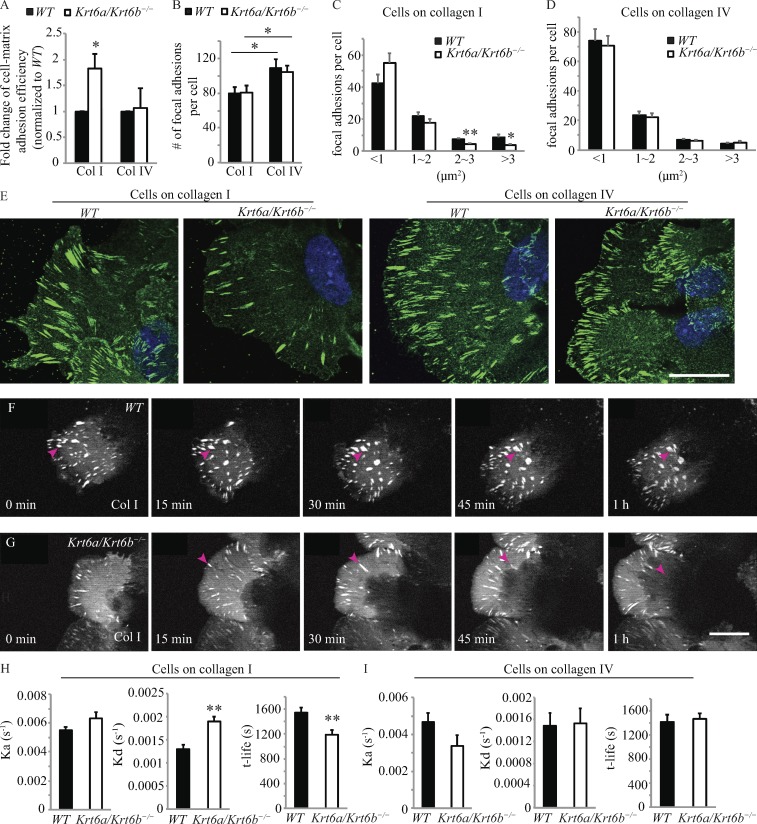Figure 2.
Increased disassembly rate results in shorter lifetime of focal adhesions in Krt6a/Krt6b-null keratinocytes. (A) Krt6a/Krt6b-null keratinocytes adhered more efficiently to type I collagen than WT keratinocytes. WT and Krt6a/Krt6b-null keratinocytes had similar adhesion efficiency to type IV collagen. Data represent the mean + SEM of six biological replicates. (B) Cells possessed increased number of focal adhesions on type IV collagen than cells on type I collagen. Data represent the mean + SEM of 30 cells from two or three biological replicates. (C) On type I collagen, Krt6a/Krt6b-null keratinocytes have less large focal adhesion than WT keratinocytes. Data represent the mean + SEM of 30 cells from three biological replicates. (D) The size of focal adhesions was not affected by the loss of K6a/K6b when keratinocytes were migrating on type IV collagen. Data represent the mean + SEM of 30 cells from two biological replicates. (E) Immunofluorescence images of endogenous paxillin (green) in WT and Krt6a/Krt6b-null keratinocytes on type I and type IV collagens. Cells were located at the migration leading edge. DAPI, blue. (F and G) Time-lapse apotome microscopy of mCherry–paxillin accumulation in focal adhesions in WT and Krt6a/Krt6b-null cells (Video 4). Arrowheads followed the same focal adhesion over time. Bars, 20 µm. (H) Compared with WT keratinocytes, Krt6a/Krt6b-null keratinocytes had an enhanced rate of disassembly and a decreased focal adhesions lifetime on type I collagen (Video 4). Data represent the mean + SEM of 10 cells. *, P < 0.05; **, P < 0.01, Student’s two-tailed t test. (I) WT and Krt6a/Krt6b-null keratinocytes have similar focal adhesion turnover rate on type IV collagen (Video 5). Data represent the mean + SEM of five cells.

